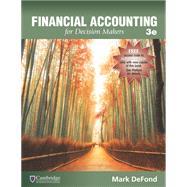Answered step by step
Verified Expert Solution
Question
1 Approved Answer
Management and Valuation of Human Capital Discuss the two approaches used by Brookfield to value human capital. Which one is better? Does Brookfield show the
Management and Valuation of Human Capital


Discuss the two approaches used by Brookfield to value human capital. Which one is better? Does Brookfield show the value of their Human Capital in their Balance Sheet? Why or why not?
DETAILED APPROACH COST VALUE APPROACH "STEADY STATE VALUE The cost value of our asset management workforce is based on the sum of each individual's lifetime target earnings. The following are the steps taken to calculate this value: 1. We started with a complete headcount listing outlining cost per person, split by function and allocated, where possible, by element of the value chain. Cost per person included salary, benefits, target bonus, and any other compensation not linked to the performance of the operating assets. We specifically did not include: a. Long term incentives based on the performance of the assets since this forms part of our defi- nition of fair market value of our human capital. These long term incentives are typically in the form of a share of the carried interest. We did not want to double count since carried interest is cluded in the fair market value of human capital. b. Training costs since the majority of our training is done in house and by on the job experience and job rotations. Accordingly, the actual quantifiable training dollar budget spend is not material. c. An estimate of the recruitment costs that would be needed to replace the employee. Recruitment costs would be an operating expense and so are not considered in a human capital valuation approach. 2. We forecasted headcount and cost by department over a period of 10 years based on Brookfield's base case 10 year business plan. We included anticipated inflation and expected career progression increases 3. We discounted these costs based on the company's Weighted Average Cost of Capital (WACC") and adjusted for historical employee turnover rates. Complete Headcount > Cost per Person X ( Turnover 114 Adjustment Factor Cost Value "Steady State Value (1+WACC) FAIR MARKET VALUE APPROACH "FRANCHISE VALUE" Fair market value of any asset is ultimately the present value of all its future expected earnings or cash flows generated. The biggest challenge with valuing human capital is linking this capital directly to a quantifiable cash benefit / value There is implicit acknowledgement that a link exists between human capital and value generated. This is demonstrated by the fact that, in many organizations, a portion of an employee's compensation is variable and dependent on additional value generated by the individual. In the case of Brookfield's asset management business, we have identified the following value outputs that can be directly linked to the performance of our human capital as follows: 1. Performance fees / Incentive Distribution Rights ("IDRS") 2. Carried interest We also identified a third value output, additional base fees from higher capital raises, but for simplic- ity and in line with our base case business plan, we disregarded this value output when calculating fair market value. Accordingly, the calculation of fair market value or Franchise Value entailed layering on the additional value that our human capital is able to generate over and above the steady state cost value in the form of: 1 Incentive Distribution Rights (IDRs) which represent a portion of distributions paid by listed partner- ships above a predetermined hurdle and were calculated based on our target projections for the underlying assets. 2. Carried interest which is a form of shared profit that an asset manager is entitled to when returns for a particular private investment / fund exceed a certain hurdle rate. We valued the carried interest by forecasting the profits we expect to earn based on the target performance of our existing investments / funds, calculating the performance fee earned as a result and deducting the long term incentive payable to our team members. Complete Headcount Cost per Person *) + Performance Factor )x(: Turnover 1 + Adjustment Factor Franchise Value (1+WACC) Performance Factor Target projection for underlying assets (IDR % + Carried Interest % - Long Term Incentive %)Step by Step Solution
There are 3 Steps involved in it
Step: 1

Get Instant Access to Expert-Tailored Solutions
See step-by-step solutions with expert insights and AI powered tools for academic success
Step: 2

Step: 3

Ace Your Homework with AI
Get the answers you need in no time with our AI-driven, step-by-step assistance
Get Started


